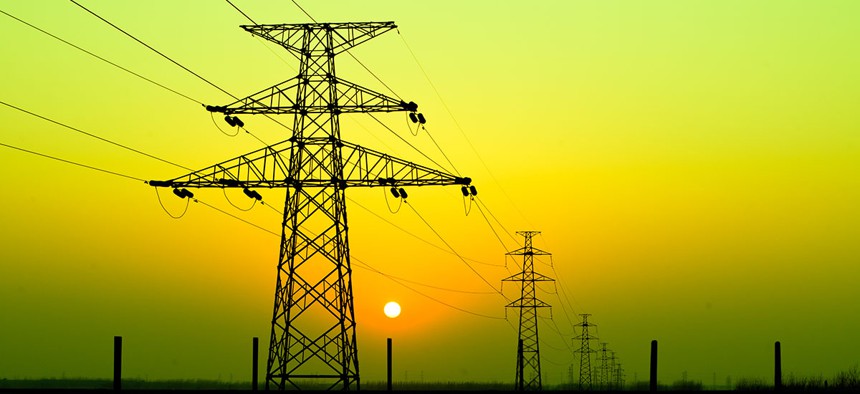Don't Read Too Much Into Vermont Hack Debacle

wxin/Shutterstock.com
A botched article about an attack on the power grid was bad reporting—but it doesn't mean attributing cyberattacks is impossible
On Friday evening, The Washington Post reported hackers affiliated with the Russian government had penetrated the United States electric grid by attacking a utility company in Vermont. The story was originally illustrated with an image of the headquarters of a Russian spy agency, which it alleged was behind the intrusion. Then, on Monday, The Post published a new story walking back its allegation of Russian interference. Now, it says, the internet traffic that raised the red flag may in fact have been harmless.
The confusion would seem at first to provide new ammunition to cybersecurity skeptics like President-elect Donald Trump, who has claimed repeatedly it’s very difficult to attribute cyberattacks to their perpetrators. He has said the hacks into Democratic organizations and operatives before the election could just as easily have come from Russia, China, or “some guy in his home in New Jersey,” despite the intelligence community’s official October assessment that the Russian government directed the attacks.
But the nonexistent Vermont power-grid attack shouldn’t shake Americans’ confidence in the ability of security researchers and intelligence agencies to root out the identity of an attacker. It’s a difficult job, and it can’t always be done quickly, but performing accurate digital forensics is the bread and butter of both private cybersecurity companies and government intelligence agencies.
Consider the differences between the mess kicked up around the Vermont power company and the attribution of the cyberattacks that targeted Democrats before the election.
This weekend’s misinformation about the Vermont case was the result of leaks from government officials to The Post based on an initial report from the company, Burlington Electric Department. After the FBI and the Homeland Security Department published a document with details about Russian cyber-operations and instructions about how to report suspicious online activity to appropriate federal agencies, Burlington Electric performed a scan of its networks.
It found “suspicious internet traffic” related to a single computer on the network, which was not connected to the electric grid system, the company said in a statement, and shared that information with the authorities. The company also said government officials told it of similar traffic elsewhere in the country, indicating Burlington Electric wasn’t the specific target of a cyberattack.
Somewhere in the multistep game of telephone between Burlington Electric, the federal government and reporters at The Post, the relatively mundane details about the malicious activity on the company’s network ballooned into a Russian assault on the U.S. electrical grid.
“It’s unfortunate that an official or officials improperly shared inaccurate information with one media outlet, leading to multiple inaccurate reports around the country,” said Mike Kanarick, the company’s communications director, in a statement.
That’s a very different path than the one that led investigators to the perpetrators of cyberattacks on Democrats, which resulted in the leaks of emails and opposition research from the likes of the Democratic National Committee and Clinton campaign manager John Podesta.
As far back as September 2015, the FBI reached out to the DNC to alert it to potential Russian activity it had detected in the DNC’s computer systems. But those warnings, which were delivered with little urgency, weren’t immediately heeded—and it wasn’t until April 2016 the organization hired CrowdStrike, a cybersecurity firm, to scan its networks.
CrowdStrike immediately found evidence of two separate intrusions from Russian intelligence agencies, and publicized its findings the following month. And in October, one month before the election, the U.S. intelligence community announced its 17 agencies were “confident” of Russia’s involvement.
Of course, believing Russia was behind the hacks on Democrats requires trusting the federal government’s ability to make that determination and the truthfulness of its account, as well as the integrity and skill of the security researchers at CrowdStrike, who were hired by the DNC.
The combination of the groups’ conclusions strongly suggests Russia was indeed behind the cyberattacks, but decisive evidence hasn’t been made public—and it probably never will be.
“I’ll be honest with you: When you're talking about cybersecurity, a lot of it is classified and we're not going to provide it,” said President Barack Obama at his year-end news conference last month.
The president asked the intelligence community to serve up a complete analysis of election-related hacking before the end of his term Jan. 20. Parts of it will be shared with lawmakers, who may choose to release unclassified details to the public.
Whether people will believe what does get released will depend on whether they trust the government to get it right, and to act in good faith. But whatever your degree of confidence in the feds, an official intelligence-community assessment should carry far more weight than a leak from an overzealous, unnamed official, based on incomplete information, to newspaper reporters who got it wrong.
NEXT STORY: Secure That Smart Toaster and Win $3,000






